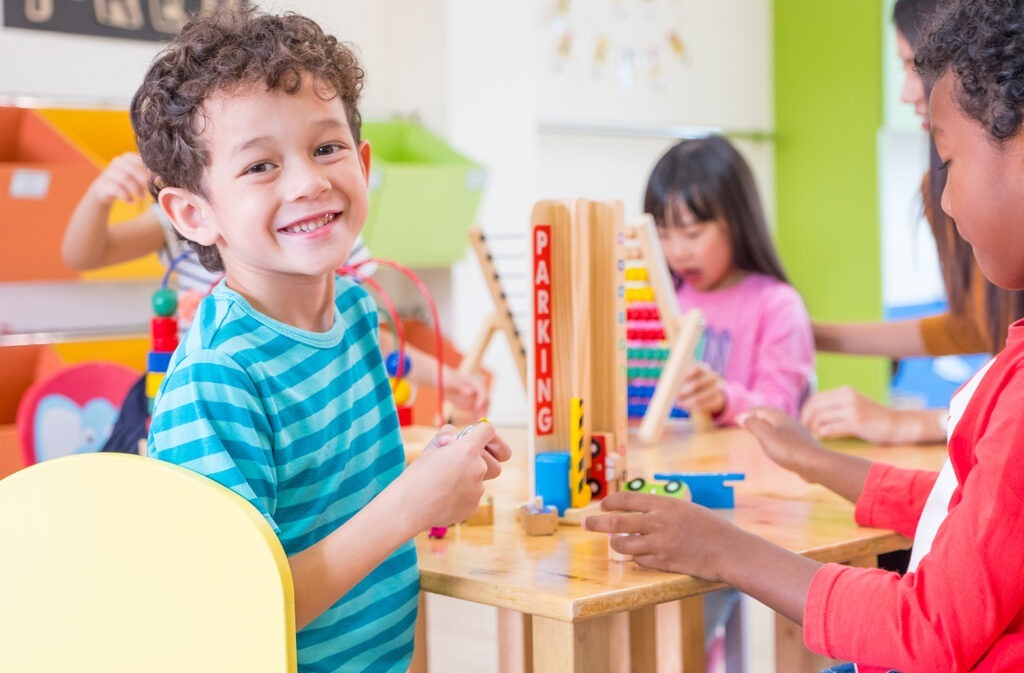Komal Bajaj
We’re in the middle of summer making new memories and enjoying our time with family and friends. However in reality, it is just a few weeks away from starting that new semester or new school depending on their age.
If you have young children who are starting nursery or preschool for the time first time, it is a huge milestone in theirs and your life as well. After all learning and development starts at a very young age and finding the right environment to build foundational skills is extremely important.
But how do you assess which preschool is the right one? What makes a preschool the best one for your child in particular? The answer can actually be quite subjective based sometimes, however you can start by using certain objective criteria to shortlist a few before you settle on the right one.
Qualification of teachers
Usually preschools do not take teacher qualifications as seriously as higher levels of education but for your child to learn basic skills it is so important for you to check the background and experience of the teachers who will be spending time with your child. You need someone who understands child development and is not just there to entertain and mind a child.
Child to Teacher ratio
For child development to be effective, a teacher should be able to provide the right amount of time to every child in their classroom. An extremely packed classroom is just not effective if it is managed by just one teacher. An ideal number of students to a teacher would be 15-20 to 1 unless accompanied by a teacher’s assistant then that number can increase to 30.
Interaction between children and teacher
Observe the teachers and see how they speak with a child, are they nurturing? Are they applying different techniques of communication depending on the behavior of the child?
If teachers are not trying to understand a child and are constantly shouting at them or talking down to them it limits a child’s ability to communicate back and this hampers development of crucial communication and social skills. Teachers should be nurturing, engaging and firm depending on the situation and class activity.
Parental Involvement
Preschools should set up regular parent teacher meetings and volunteer opportunities to learn more about the school, the curriculum and the teachers. Regular discussions on the child’s progress and in school interactions are vital for the parent to establish a relationship with teachers and a great way to provide parents with access to their child’s day and environment.
Another avenue for teachers and child care professionals to involve parents is through the use of technology. The availability of child care and school management apps helps parents get involved on a daily basis and not miss important moments of a child’s day.
Ambience of the school and classrooms
When you look around do you see happy children? Do they look like they are enjoying their time with the school activities? Are they happily interacting with the teacher and other children? It is so important for children to learn in a positive and uplifting environment.
Another factor to keep an eye on is if the teachers and staff are happy and not looking overwhelmed and tired. Unhappy staff can overlook certain things and not care enough for the child’s welfare.

Activities
Take a look around the preschool including the individual classrooms and play areas. Do you see children engaged in activities? Is there a variation from learning and play activities? Is there appropriate equipment and resources for every child?
Preschools should provide both learning and play activities for children to stimulate their mind and promote social interactions. Children’s art and achievements should be displayed in the classroom which should provide you with insights into the learning and play activities of the nursery.
Naptimes are also important to keep them well rested between school work and play time.
School Facilities and Cleanliness
The upkeep and cleanliness of the classrooms, classroom equipment, play areas and playground should provide you with an indication of how the preschool maintains their facilities. The nursery should have medical facilities, nap areas, waiting areas for parents and visitors.
Check out the bathrooms to see if they are equipped for toilet training and if they is enough space for children to be assisted and cleaned. The stalls and sink should be built at appropriate heights so children can attempt to take care of their business and wash their hands independently.
So, while there are many things to consider when evaluating preschools for your child, these criteria should help you get started and shortlist a few. At the end of the day the final decision boils down to personal preferences from culture, language, special needs requirements, financials and finally your gut feeling.



